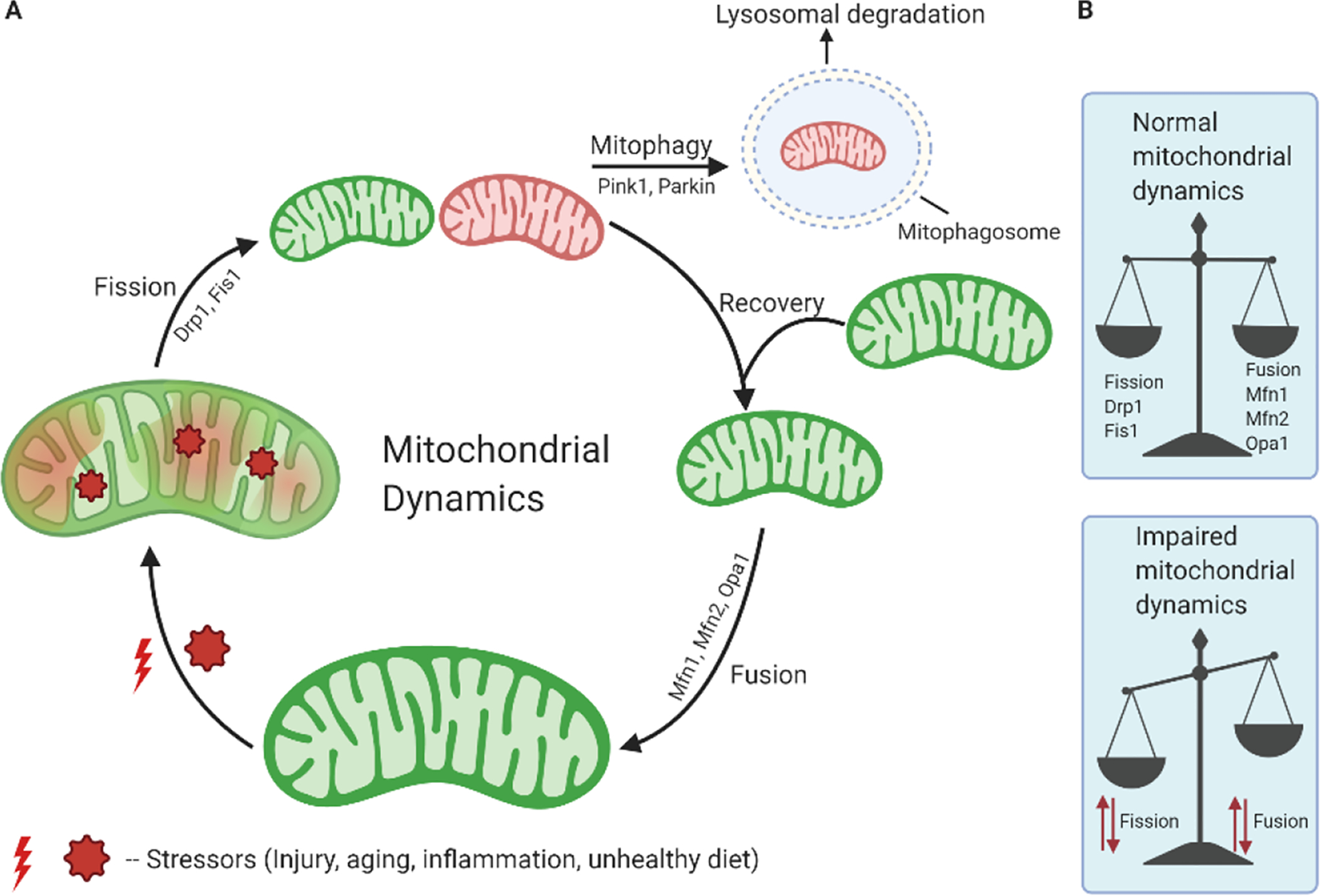Fig. 3:

Mitochondrial dynamics and turnover. A) A simplified overview of the processes through which mitochondria undergo morphological changes and recycling. Over time with stress, a mitochondrion accumulates damage, which undergoes fission through Drp1 and other proteins and helps in segregation of damaged mitochondria. A damaged mitochondrion is marked and recognized by the macroautophagic machinery, forming a mitophagosome. This then fuses with a lysosome to be degraded by mitophagy. After the fission event, a healthy daughter mitochondrion undergoes recovery and fusion with the help of Mfn1, Mfn2, Opa1 proteins. B) Under normal physiological conditions, there is a balance between fission and fusion events and mitochondria maintain healthy life cycles. However, under pathological conditions, alteration in fission and fusion processes causes mitochondrial dynamics imbalance leading to altered mitochondrial morphology.
